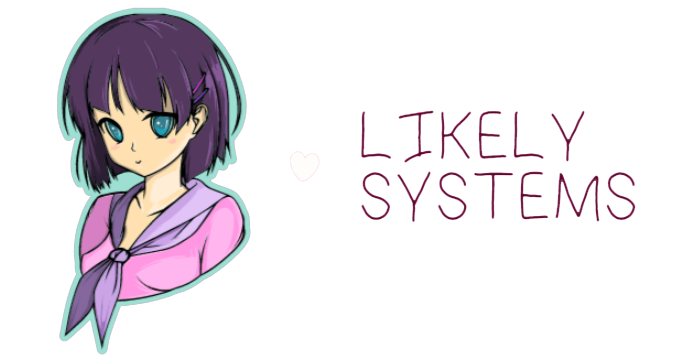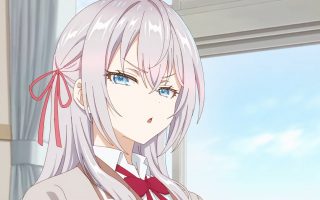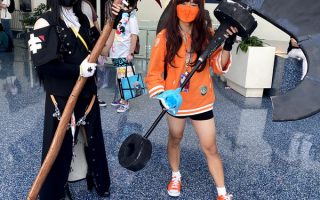WARNING: Many words ahead. More than I expected.
Watching seasonal anime these days feels much different than it used to for me. While I’m still good at picking up shows that I’ll enjoy and have gotten better at not feeling guilty about not watching things people say I should watch, the reality is that picking up a show feels like a crapshoot because the industry’s current state means there’s a good chance the production of almost any given show could implode any week.
Regardless, I watched a bunch of stuff this season. Here’s what I thought of what I watched.
Bungo Stray Dogs (Season 4)
Hey, what do you know? It turns out that even this far into the show, Bungo Stray Dogs continues to be imminently watchable, to the point that I actually powered through season 4’s entire run of episodes in a single day (complete with OP/ED skipping).
It’s also somewhat notable that this season of the show largely relegated most of my favorite characters (Kyouka, especially) to side roles and yet still managed to keep me interested. It even triumphed over my lack of memory over what happened in the past season. So, kudos Bungo. I guess Igarashi still has it, with all due apology to the people who want Doremi Igarashi back.
As far as I’m concerned, Igarashi continue to apply his directorial to talents is valid in exactly the same way that the John Wick movies are. Sometimes, it’s pretty cool to have action entertainment just look cool and be made by people who actually care about the craft of making things look beautiful. Bungo‘s crimes are of far less magnitude than, say, My Hero Academia, so I hope we can all just acknowledge that Igarashi is clearly having a good time and leave him to make his silly little shounen show of beautiful, beautiful people and one tiny violent child (truly, what a wonderful addition to the cast).
Anyways, the Armed Detective Agency is still going through it, but at least Dazai is on the case of chatting sexily back and forth in Fyodor. By the way, that little twist at the end was delicious. Fate/ level specificity.
Danmachi (Season 4, Part 2)
I’ll just say what we’re all thinking: This has been the best cour of episodes Danmachi has had since the first season. In fact, the similarities between season 1 and this second half of season 4 are unexpectedly clear: a tighter focus on a singular relationship between Bell and one other girl (Hestia in season 1, despite dalliances with Lili; Ryu in season 4), which can’t help but leave us with a more satisfying depiction of a relationship that actually has on-screen time to breathe.
To be fair, given that Bell and Ryu spend the majority of this season buried in the depths of the dungeon alone except for Ryu’s haunting past and the monsters and the Juggernaut, Danmachi basically forced itself back to this mode, but I still enjoyed it. I’m not really sure how much I care for her going all blushy-cushy for him by the end given the mentor-mentee dynamic they had going on, but you have to admit few other ships have earned it as much as Bell x Ryu has. And that shot of her feet in the final minutes was pretty heckin’ cute.
Look at what this season of Danmachi has done to me, making me actually seriously discuss its ships! But I guess that’s just what you get when the stars align and an arc actually gets both decent pacing and reasonable production (shoutout to Kenichiro Aoki for again providing a good chunk of the animation highlights). I’ve more or less resigned myself to the fact that the Hestia/Bell relationship that I so adored in season 1 is never coming back in the way it once existed, so I’m glad the franchise is giving me some other good things to enjoy.
Now to get back to Bell’s hero worship of Aiz… please… this is the content I’ve wanted most from the start…
In/Spectre (Season 2)
I didn’t expect to get a second season of In/Spectre. After all, aside from Kotoko being a sexually amped little gremlin, what is the marketable appeal of this show? The mysteries that aren’t ever really mysteries because Kotoko never has any thing to solve, just machinations to explain (often after the fact)? The light-handed incorporation of Japanese folklore and mythology, which is fun but never really the true focus of any given arc? The slideshow visuals? Kuro’s non-existent personality? The wittiness of the banter?
Okay, I concede that the last one is a valid appeal point, but the combination of that and Kotoko’s frank explanations of her sexual desires don’t really seem like enough to make spending whatever budget was required to make another season of the show worth it. Worth it, financially, to be clear. I personally find it worth it because the way Kyo Shirodaira writes dialogue is both unhinged and deeply entertaining. So yes, for the audience of: me, In/Spectre‘s second season more than justifies itself.
Unfortunately for the production committee, I’ve already bought the manga up to the point where the anime leaves off. It does speak well of this adaptation—or at least its ability to preserve the delightfulness of Shirodaira’s writing—that I happily observed all these arcs go by again. You just aren’t getting this kind of offbeat story anywhere else in anime right now.
To the anime’s credit, though, I did pick up on one thing here that I didn’t in the manga, which is the way Kotoko and Kuro’s relationship is show to have developed over time. In the final major arc, specifically, there’s a short moment where Kuro lies down on a bed after a long meeting with the would-be inheritors and Kotoko flops down on top of him. In earlier arcs, he probably would have protested, but instead the physical contact, chaste though it may be, seems satisfying and comfortable to both of them, a subtle indication of their growing closeness.
I really don’t expect to see more In/Spectre get animated at this point, but then again, I never thought we’d get this far either.
Sugar Apple Fairy Tale
Any time a shoujo anime gets me to compare it to Akagami no Shirayuki-hime, you have to give it some serious props. Something about the way Anne trudges intrepidly forward through all the sexism, classism, and jealousy—a veritable storm of bullshit—thrown at her throughout the series reminds me of Shirayuki’s own quest to assert herself and her identity as a working woman in an antagonistic world. Challe’s no Zen, but I did come to quite love the way his emotional support of Anne often is simply his faithful presence in her life, rather than words of wisdom.
Of course, one thing that Sugar Apple Fairy Tale has that Shirayuki-hime doesn’t is, uh, the whole slavery thing. Slavery has become a somewhat unnervingly common theme in anime in recent times, but thankfully Sugar Apple Fairy Tale uses it as as setting and thematic element than some kind of gratuitous fantasy for the audience. Even if Anne and Challe’s relationship begins with her buying him, any sort of fanservice that might be derived from having power over is a beautiful, dangerous fairy man is contradicted by Anne’s own attitudes about enslaving Challe and the way he possesses the power in their relationship.
Anne and Challe’s evolving relationship is, unsurprisingly, the heart of this series, but it’s really Anne’s journey as an artisan with ideals that drives the whole show. Her evolving awareness of not only Challe as a person, but also of the fairy race’s condition in the world they inhabit together, is paralleled by her growing sensitivity as an artist and her desire to meet the needs of her audience. In this way, though it’s odd to say given the fact that Challe is doubtless supposed to the object of the audience’s desires, Challe’s affections for her seem almost to represent how the audience may come to love Anne. It makes his sacrifice for her in the season finale all the more nauseating, inspiring, and heartwrenching.
Speaking of that sacrifice, wow, Bridget sucks so much!!! In fact, if I were to float any issues with Sugar Apple Fairy Tale, it might be how many characters in the show just kinda… suck. Excepting perhaps the Duke of Philax, who is humanized by his grief, basically any character who isn’t specifically supportive of Anne turns out to be kind of awful. Jonas, Kathy, Sammy, Bridget, and random judgmental town people contribute to a world that feels like it’s specifically out to get Anne, which sometimes feels odd in a show that is otherwise so pleasant and cute.
I’ll be eagerly looking forward to the second season.
Hikari no Ou
I originally started watched Hikari no Ou because the premise was different and because the trailer promised a gritter, less prettified kind of fantasy than we tend to get in anime nowadays. Having seen Mamoru Oshii (Patlabor, Ghost in the Shell) was handling the writing duties, I wanted to see if we were going to get some kind of throwback anime experience—and in a way, that is sort of what we got, a fantasy anime that felt more like Sword of the Stranger than Danmachi.
But what kept me watching the show was the spacey, sparse style of direction, which I found at once disorienting and enchanting. Imagine my surprise, then, when Kvin of Sakugablog pointed out to me that the director of the show was none other than Junji Nishimura, a name that probably means nothing to most of you until I remind you that he was the director of the infamous Glasslip, which as some of you may remember from years back, I have a lot of affection for.
My reaction to this revelation.
Junji Nishimura, returns out of the depths of the anime industry with his indescribable directorial style to save anime. Whether you consider Nishimura a hack, a genius, or just wonder why he does what he does, I think you can’t deny that his touch makes Hikari no Ou significantly more fun and interesting than the majority of anime getting made these days. I crave the novelty, even if that same novelty makes me question the business acumen of the production committee that’s funding the show.
And all that is without touching on the content of the show itself, which actually is fairly interesting in its own right: the convoluted relationship between humans and gods and the gods themselves, the contradictions of the world, and the small roles lead characters Touko and Koushi are playing within the divine maelstrom. I’m keen to see what will happen in the next season, which is somehow a thing that will exist.
BLUE LOCK
I don’t have the greatest history with soccer anime. The beauty of the beautiful game is in its constant motion, in the shift of positions and players and colors across the broad green swathe of the pitch, and anime, constrained both by narrative and the limitations of the medium, simply doesn’t really have the capacity to capture what the sport is all about. Thus, every soccer anime I’ve tried in the past has let me down.
BLUE LOCK gets around this issue by not really being about soccer. Sure, soccer is a big part of the setting and much of the technical jargon is about soccer, but ultimately this is just a battle shounen where soccer moves are the power-ups of choice. So I can enjoy the trappings of soccer being applied in a familiar context, even if ultimately the idea the show’s going with of solitary ego over teamwork ultimately isn’t valid in actual soccer.
The thing I do find funny about the show is that although it’s chosen to focus on strikers, Isagi’s power of choice (his vision of the field) isn’t really a striker-specific attribute. Furthermore, you could even possibly argue that vision is more important for midfielders, and that really this show should be about developing the greatest midfielder because if you have no midfield it becomes so much more difficult for strikers to score goals. Not to mention the fact that much of Isagi’s journey so far has been about learning how to maximize the unique talents of his teammates, which is yet another midfielder-like skill.
So what I’m really saying here is that midfielders are cooler than strikers and BLUE LOCK should have been about midfielders instead of strikers.
Watching anime really is fun, it turns out. As has been my wont of late, I actually ended up watching the majority of these in chunks (3-4 episodes at a time) rather than following them weekly. For whatever reason, that just seemed to work a lot better for me—perhaps because the joy of being really immersed in each one’s world. Who says you have to watch seasonal anime weekly?
And for those of you wondering, Danmachi and Sugar Apple Fairy Tale were probably my favorites, followed by In/Spectre, Hikari no Ou, Bungo Stray Dogs, and BLUE LOCK.
How about you all? What struck your fancy this past season? Tell me about how you agree that Hikari no Ou is a work of underappreciated genius.




